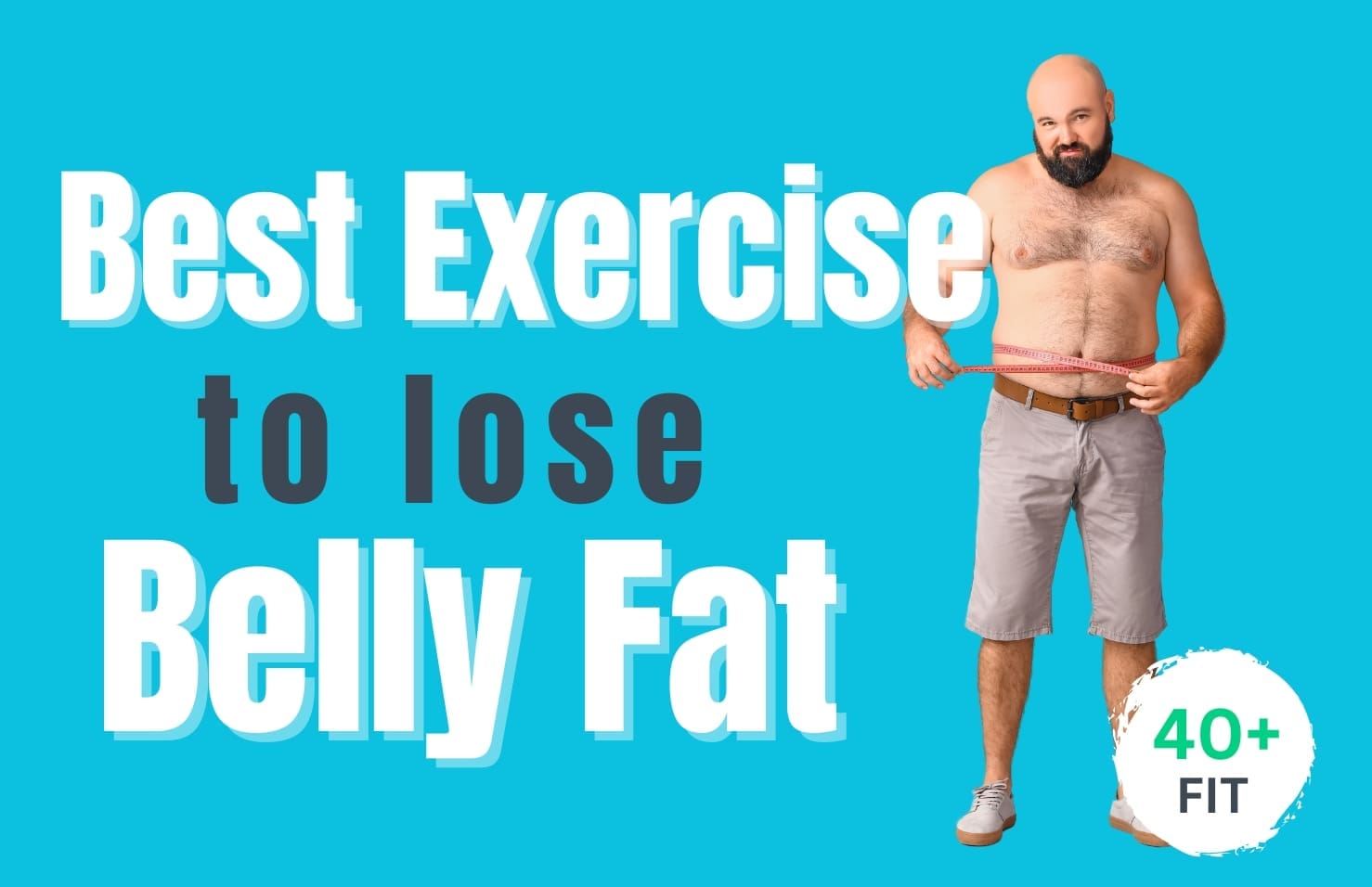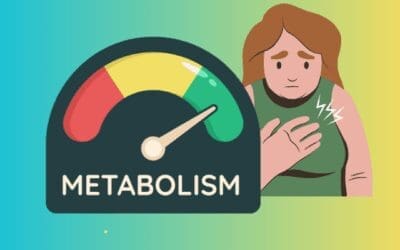Belly fat can be a stubborn and frustrating issue, especially as we age. But while there’s no magic bullet for targeting belly fat specifically, adopting a combination of practical exercises, strength training, and a balanced diet can help reduce overall body fat, including the belly. In this article, we’ll explore the best exercise to lose belly fat for individuals over 40, focusing on practical and sustainable methods that work with your body’s unique needs.
What Is Belly Fat and Why Is It an Issue?
Belly fat, or visceral fat, is fat stored in the abdominal area and surrounding your organs. Unlike subcutaneous fat (the fat just under the skin), visceral fat poses significant health risks, especially as we get older. Common causes include a sedentary lifestyle, poor diet, hormonal changes, and stress. Belly fat is linked to increased risks of:
- Type 2 diabetes
- Cardiovascular disease
- Insulin resistance
- Certain cancers
Benefits of Losing Belly Fat
Losing belly fat isn’t just about appearance; it’s about improving your overall health. Here’s how reducing belly fat can benefit you:
- Improved Heart Health: Less belly fat lowers your risk of heart disease and stroke.
- Better Blood Sugar Control: Reducing visceral fat can help stabilize blood sugar levels, lowering the risk of diabetes.
- Enhanced Mobility and Energy: Shedding extra weight can make daily tasks easier and give you more energy.
- Better Sleep: Studies show that losing abdominal fat can improve sleep quality.

Can You Target Belly Fat? The Myth of Spot Reduction
One of the biggest misconceptions about belly fat is the idea of “spot reduction”—the belief that you can target fat loss in specific areas. Unfortunately, this is not how fat loss works. When you lose fat, it occurs throughout your body as a result of overall weight loss, not in a localized area.
The Role of Diet in Fat Loss
Before we dive into exercises, it’s essential to recognize that diet plays a larger role than exercise in fat loss. You can’t out-train a bad diet. Focusing on nutrient-dense, whole foods, reducing processed sugars, and creating a calorie deficit are key components of any weight-loss plan.
Best Exercises to Lose Belly Fat for Those Over 40
Although no exercise can specifically target belly fat, certain exercises can help you burn calories and strengthen your core, leading to overall fat loss. Here are some of the best options for people over 40.
1. Walking: The Easiest and Most Practical Exercise
One of the simplest yet highly effective exercises for burning fat is walking. It’s low-impact, easy on the joints, and can be done anywhere.
- Why It Works: Walking burns calories and improves cardiovascular health without straining the body.
- How Often: Aim for 45-60 minutes of brisk walking at least five times a week.
2. Strength Training: Build Muscle to Burn Fat
As we age, muscle mass declines, which can slow your metabolism. Incorporating strength training into your routine helps build lean muscle mass, increasing your calorie burn even at rest.
- Why It Works: More muscle means a faster metabolism, which helps in fat loss.
- Types of Exercises: Start with bodyweight exercises like squats, lunges, push-ups, or use dumbbells and resistance bands. Try to hit each muscle group twice a week with six sets in total.
3. HIIT (High-Intensity Interval Training): Maximize Fat Burn in Less Time
HIIT involves alternating between short bursts of intense exercise and periods of rest or lower-intensity exercise. This type of workout boosts your metabolism and burns more fat in less time.
- Why It Works: HIIT continues to burn calories long after your workout is done.
- How Often: Two to three 20-minute sessions per week can be enough to see results.
Alternative Exercise Options
Understandably not everyone is interested in strength training or HIIT as they can be quite intense. Some lower impact options are available. These alternatives are not as effective in weight loss so they need to be done in conjunction with a strict calorie deficit diet.
Yoga and Pilates: Low-Impact Alternatives
For those who find high-intensity workouts challenging or want a change of pace, yoga and Pilates are excellent options. While they may not burn as many calories as other forms of exercise, they improve flexibility, core strength, and overall well-being.
- Why It Works: Yoga and Pilates help strengthen the core muscles, which supports better posture and balance.
- How Often: Aim for two to three sessions per week to build flexibility and reduce stress.
Tailoring Exercise to Your Starting Point
The type of exercise that works best for you will depend on your current fitness level. It’s essential to choose exercises that are both safe and sustainable to ensure long-term success.
If You’re Obese or Even Overweight: Start with Walking
For individuals with obesity or a significant amount of weight to lose, high-impact exercises like running or jumping may put undue stress on your joints, increasing the risk of injury. Walking is a simple, effective, and low-impact way to start your fitness journey.
- Why Walking?: Walking is gentle on your joints while still helping you burn calories and improve cardiovascular health.
- Start Slowly: Begin with shorter, manageable walks, and gradually increase your pace and duration over time. Try aiming for 30 minutes a day and slowly build up to 60 minutes as your endurance improves.
- Add Light Resistance: Once you feel more comfortable, you can incorporate light resistance exercises, such as bodyweight squats, or using resistance bands, to start strengthening your muscles alongside your walks.
If You’re Active: Focus on Strength Training, Walking, and HIIT
For those who are already active or at a moderate fitness level, combining strength training, walking, and HIIT (High-Intensity Interval Training) can accelerate fat loss and improve overall fitness.
- Strength Training: Aim for 3-4 sessions per week with exercises such as squats, lunges, push-ups, and deadlifts. These exercises build muscle, increase metabolism, and support fat loss. Try to hit each muscle group twice a week.
- Walking: Along with strength training, increasing your daily step count will further aid in calorie burning. Aim for 10,000 steps per day by incorporating small lifestyle changes like walking during breaks, parking farther away, or using the stairs.
- HIIT (High-Intensity Interval Training): HIIT involves short bursts of intense activity followed by rest. These workouts can range from 15 to 30 minutes and are incredibly effective for burning fat. For example, you can perform 30 seconds of sprinting followed by 30 seconds of walking, repeating for 15-20 minutes. HIIT can help you burn calories quickly, improve cardiovascular health, and enhance metabolism, making it ideal for fat loss.
By tailoring your exercise routine to your fitness level, you create a plan that suits your body and your goals. Whether you’re just starting with walking or challenging yourself with strength training and HIIT, the key is consistency and gradual progression.
The Importance of Consistency and Habit-Building
While strength training and HIIT may be more effective for fat loss, the best exercise to lose belly fat is the one you can do consistently. Building healthy habits is more important than following a strict workout plan or fad diet.
Tips for Building Sustainable Habits:
- Start Small: Begin with daily walks or light strength training and gradually increase intensity.
- Mix It Up: Combine different types of exercise—walking, weightlifting, and yoga—to avoid boredom and burnout.
- Listen to Your Body: If you have joint pain or other health concerns, adjust your workouts accordingly.
How Long Does It Take to Lose Belly Fat?
The timeline for losing belly fat varies from person to person. A good rule of thumb is to aim for 1-2 pounds of weight loss per week, which means noticeable results in about 8-12 weeks. Remember, the more belly fat you have to lose, the quicker the initial weight loss may be. For those with less to lose, progress might be slower but more sustainable.
Final Thoughts
Losing belly fat is a gradual process that requires a combination of exercise, a healthy diet, and consistency. There’s no quick fix, but adopting a sustainable approach to fitness and diet can help you achieve long-term results. Remember, it’s not just about the fat—it’s about improving your health and quality of life.
Call to Action
Ready to start your fitness journey? Sign up for a no-obligation coaching call today and get personalized advice on the best exercises to lose belly fat and improve your overall health.






